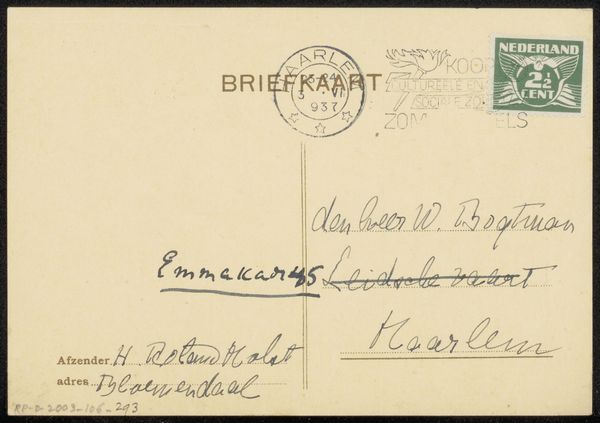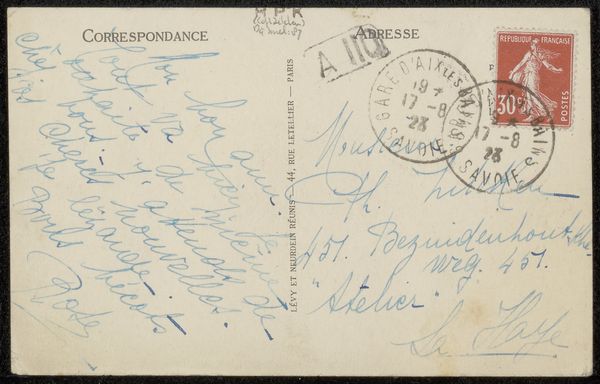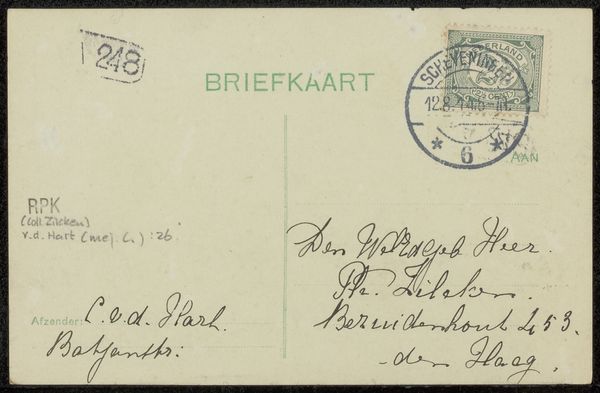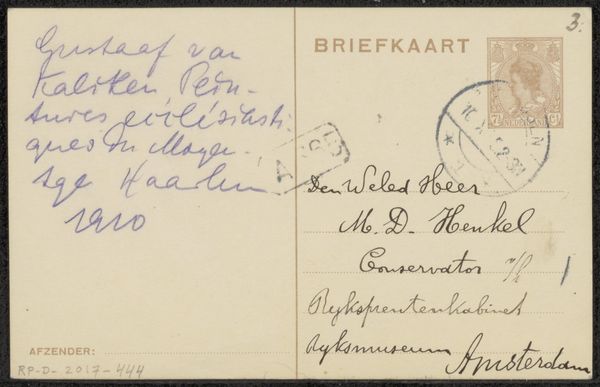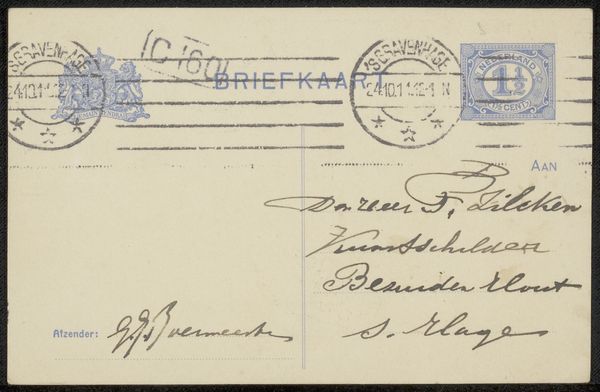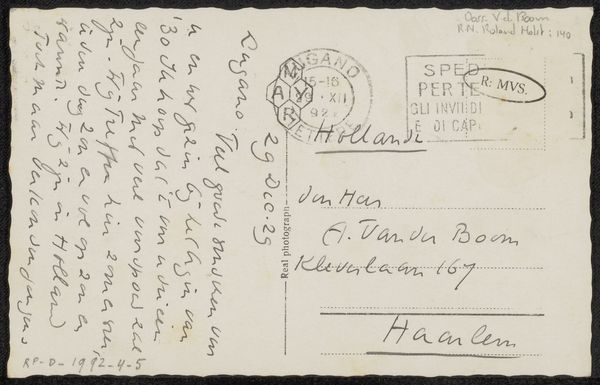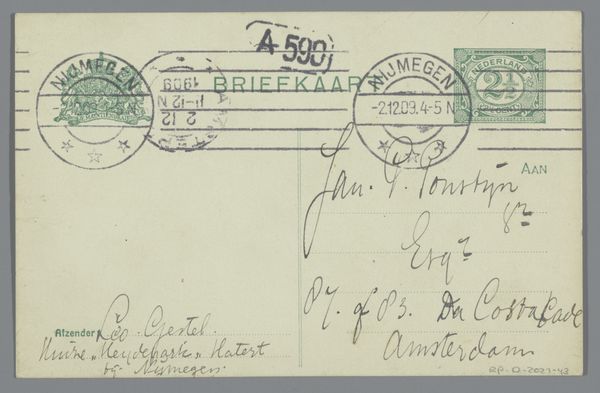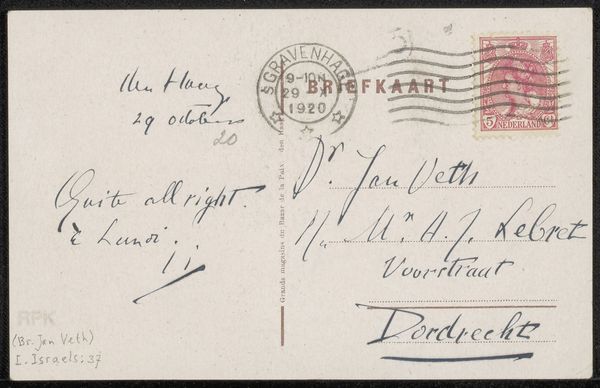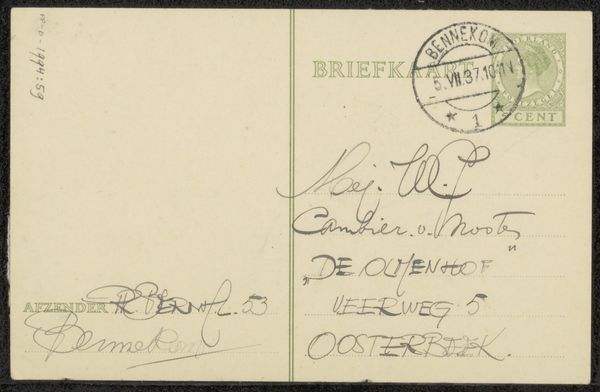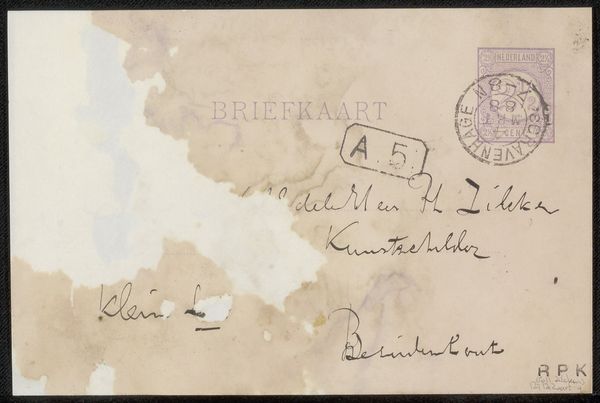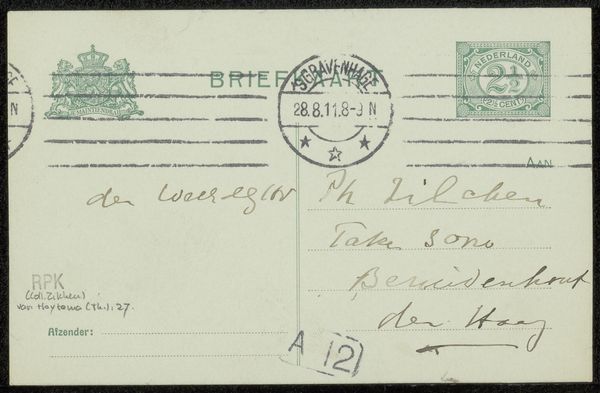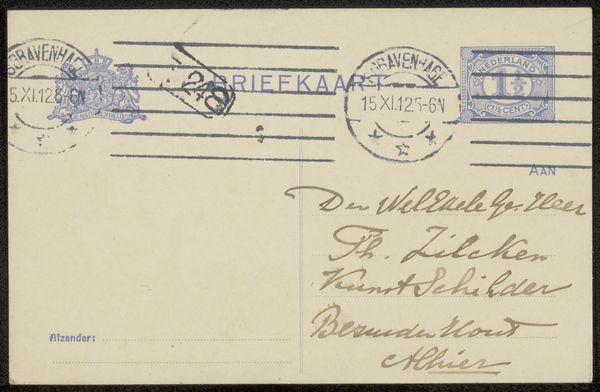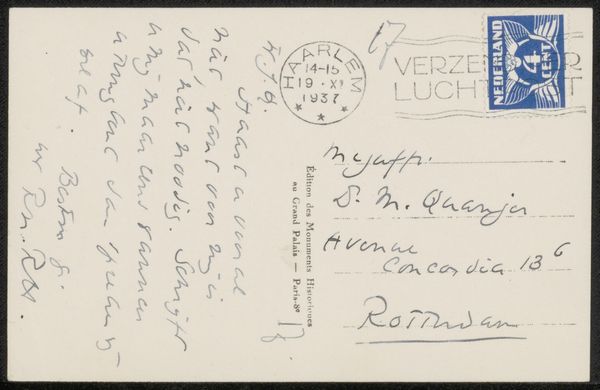
drawing, paper, ink
#
drawing
#
paper
#
ink
#
modernism
#
calligraphy
Copyright: Rijks Museum: Open Domain
Editor: So, this work is a postcard entitled "Briefkaart aan Mien Cambier van Nooten" by Dick Ket, made with ink on paper before 1938. My first impression is that the handwriting feels so personal, but also a little bit mysterious, as if there's a hidden narrative here. What do you see in this piece? Curator: Indeed. This postcard, beyond its immediate function, whispers of connections, intimacy, and the weight of human relationships. Notice the stamp – a Dutch stamp from that period, a visual shorthand for a specific time and place, holding both national identity and the cost of communication. The handwriting itself becomes an iconic element. Editor: Iconic how? Curator: Handwriting carries echoes of the writer’s personality, their emotional state, the very tempo of their life at that moment. The varying pressure of the ink, the slant of the letters... What do they evoke for you? Do you see specific symbolism embedded within the penmanship itself? Editor: I guess the elegant loops suggest formality, maybe a hint of practiced correspondence, contrasting with the more casual, almost scribbled note on the left. Almost like two different messages or voices occupying the same space. Curator: Precisely! The card functions as more than just a message. The date, the stamp, the handwriting – they all intertwine, forming layers of meaning, echoing a particular moment in time. Think of how the postal system itself connects communities; what feelings do those modes of connection stir? Editor: That makes sense. It's almost like a tiny, time-bound artifact, holding within it social history, personal narrative, and visual artistry, all coexisting on this small piece of paper. I learned how symbolic even something like handwriting and a postage stamp can be. Curator: It is a reminder that even mundane objects can carry immense cultural and personal weight.
Comments
No comments
Be the first to comment and join the conversation on the ultimate creative platform.
